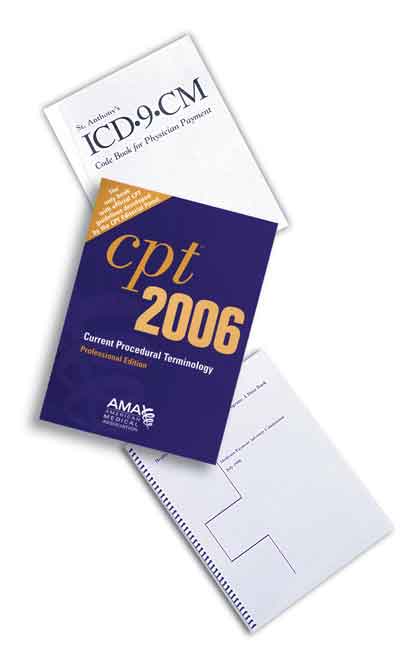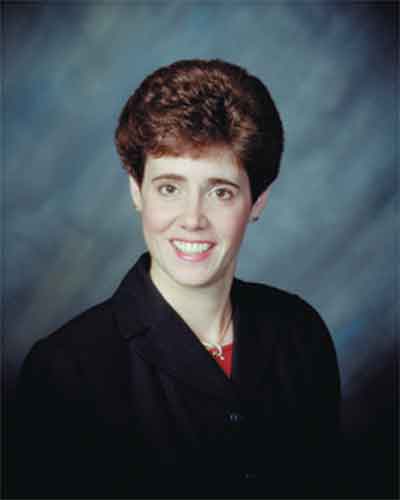A: Yes. The October update of ICD-9 codes contained a series of new diagnosis codes to describe inflammation (infection) of a post-procedural bleb. Published in CMS Transmittal 990, these new codes took effect on October 1, 2006 and are published in the 2007 ICD-9 Coding Manual.
New codes pertinent to ophthalmology are:
• Optic Nerve Hypoplasia 377.40
• Inflammation (infection) of post procedural bleb,
Unspecified 379.60
Stage 1 379.61
Stage 2 379.62
Stage 3 379.63
The Centers for Disease Control and Prevention characterizes the stages this way: Stage 1, bleb purulence with or without a mild anterior segment inflammation. Stage 2, bleb purulence and moderate anterior segment inflammation. Stage 3, marked anterior chamber reaction, vitritis and severe pain. Stage 3 may lead to bleb-related endophthalmitis and acute visual loss.
Q: Has the OIG identified areas of scrutiny pertinent to ophthalmology?
A: The Office of the Inspector General's 2007 work plan contains items specific to ophthalmology as well as other areas pertinent to ophthalmic practice. They include:
• Eye surgeries. A review to determine if payments for ophthalmology services related to cataract surgery and LASIK surgery were billed appropriately.
• Botox treatments. Were payments appropriate for medically necessary treatments with Botox?
• E/M services during global surgery periods. Were appropriate payments made to physicians for services provided in the postoperative period?
• "Incident to" services. Plans to evaluate the appropriateness of services provided incident-to physician services. Do they meet documentation requirements, are they medically necessary, and is the quality of care appropriate?
• DMERC claims. Does the documentation support claims with medically necessary modifiers?
• Place of service errors. Does the place of service on the claim form match the place of service where services were performed?
• Billing service companies. Examine the relationship between physicians and their billing companies. Does the relationship influence billing practices?

Q: Are existing Medicare providers required to update their enrollment information with CMS?
A: All providers must revalidate their enrollment information with CMS. This process phases in over the next two years and will repeat every five years. New CMS-855 enrollment forms are available on the CMS website.
Q: What steps can we take to improve timely processing of enrollment applications?
A: CMS publishes a list of tips to improve timely processing. They include:
• Utilize the 2006 version of the CMS-855 forms.
• Submit a complete application to the correct contractor with all supporting documentation.
• Obtain a National Provider Identifier (NPI) before updating records with Medicare.
• Submit an Electronic Fund Transfer (EFT) agreement with the application (if applicable).
• Sign and date the application.
• Respond promptly and fully to contractor requests.
Q: Are we required to receive funds through electronic fund transfer?
A: All practices will eventually need to receive their Medicare and Medicaid payments through electronic fund transfer. Federal law, found in Title 31 of the U.S. Code (31USC3332), mandates it. CMS requires that new enrollees and those providers and suppliers submitting a CMS-855 change request must sign up for EFT rather than receipt of paper checks. This may mean that some doctors are paid by EFT, and others are paid by check. You may want to consider signing up all providers for EFT. The form to complete for EFT is the CMS-588. Once your application and voided blank check have been filed with your Medicare contractor, they expect EFT to begin within two weeks.
Q: Is there a new CMS-1500 form for claim filing under development?
A: The new form is expected to be implemented on January 2, 2007 with a February 1, 2007 implementation deadline. It contains fields for recording the NPI. A three-month grace period exists for transitioning to the new form.
Q: When may we use the NPI number on claims?
A: The NPI number may be used alone on claims as of October 1, 2006; however, CMS recommends that another identifier also be utilized on the claim (i.e., UPIN number). The NPI number is required on all claims beginning May 23, 2007.
Q: What changes will happen to Part B premium costs in 2007?
A: Most patients will note a 6 percent increase to their Part B premium. The 2006 premium is $88.50 per month. The base premium for 2007 is $93.50 per month. Beginning in 2007, premiums will be tied to the beneficiary's income. The Medicare Modernization Act of 2003 contains a provision requiring higher premiums for higher income beneficiaries. The three-year transition for this approach begins in January 2007.
It is estimated that only 4 percent of beneficiaries will be affected. Individual tax returns must exceed $80,000 in income, $160,000 for couples, before premiums are affected. A tiered approach for increased premiums takes affect based on beneficiary incomes. For example, an individual earning $80,000 to $100,000 or a couple earning $160,000 to $200,000 will pay an additional $12.50 for a monthly premium of $106.
Q: Is the Part B Medicare deductible increasing again?
A: Yes. This is the third year in a row for a deductible increase. As of January 1, 2007, the Part B deductible will be $131. The Medicare Modernization Act stipulates that the Part B deductible be indexed to the increase in the average cost of Part B services.
Q: Are there changes affecting Ambulatory Surgery Centers?
A: The Deficit Reduction Act of 2006 imposes a cap on payments for ASC services effective 1/1/07. If a procedure is paid higher at an ambulatory surgery center than in a hospital outpatient department (HOPD), the ASC reimbursement will be reduced to the HOPD rate. Of particular interest to ophthalmology is YAG laser capsulotomy (66821). In 2006, this procedure reimbursed $446 to the ASC and $299 to a HOPD.
Q: Other than YAG laser capsulotomy, are there other ASC reimbursed procedures affected by the payment cap?
A: Yes. The following ophthalmic procedures will be capped in 2007:
• Removal of iris 66625
• Removal of lens lesion 66830
• Severing vitreous strands 67031
(laser)
• Treatment of retina 67141
• Revise eyelashes 67830
• Probing nasolacrimal duct 68810
Q: What progress has been made on a new ASC payment system?
A: The latest proposal links ASC payment rates to those of a hospital outpatient department. It suggests that ASCs be paid at 62 percent of the HOPD fee schedule, and revises the eligibility criteria for procedures performed in an ASC. The new system would take two years to phase in, beginning January 2008.












